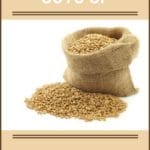
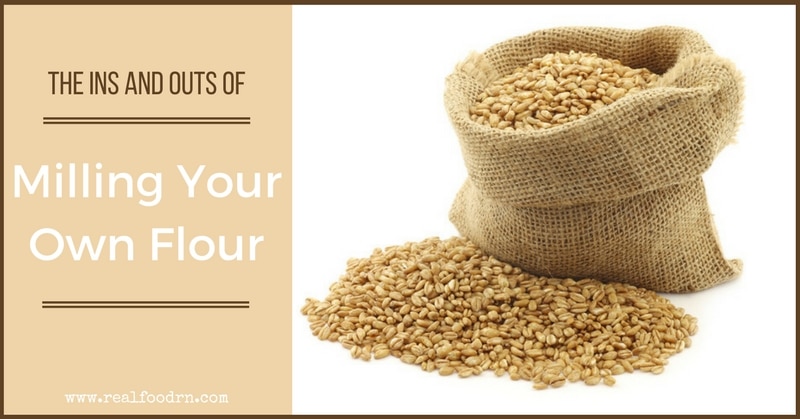
Grain is often considered one of nature’s gifts due to its sustainability and versatility. Grain flour is a basic ingredient that’s accessible to most of the world’s population because it’s affordable and easy to grow. This basic ingredient is essential to creating delicious foods, and the flour varieties we now have access to have grown tremendously since our predecessors came across it. And if you’re like me, you use it every day to cook healthy meals for your family.
But, have you ever wondered about the quality and nutrition of the flour you use? Many of us don’t since it’s so available, we take for granted that quality brands and types of flours are as good as it gets. If you are buying organic flour, you know that it isn’t filled with artificial ingredients, but is that enough? Maybe you should look into milling flour.
Why You Should Try Milling Flour On Your Own
It’s more nutritious.
The quality of your flour depends on several different things, including the milling process, the conditions the grain grows in and the size of the production. When flour is produced on a mass scale, it loses the majority of the grain’s naturally-occurring vitamins, nutrients, minerals, and antioxidants, thanks to processing.
Most of the nutrition in grain is found in the bran and germ of the kernel. But commercial flours remove the bran and germ because without the oils that those parts contain, the flour lasts longer on the shelves. The grain kernel contains over 30 nutrients, and most of them are removed during the commercial milling process. Even if you buy “enriched” flour, you are only getting a fraction of the nutrition that is readily available in the whole grain.
You can choose your own grain.
When you milling flour on your own, you are in charge of what type you use in various ways in your kitchen. For example, if you need to use a gluten-free option for those in your house who have gluten sensitivity, but also want to have other alternatives available for the rest of your family, you can easily do that. I also love milling my own flour because I can use ancient grains that are hard to find already milled.
It’s more cost-effective.
Buying organic, whole grain bread is expensive. So is buying the grains to make your own. But even including the expense of purchasing an electric mill, I spend approximately 25-50 cents per loaf of bread when I am milling flour in my home. And that’s just for bread. Think of all the other things you make with flour! If you eat a few loaves of bread each week, you can easily pay for your mill in the first year!
If you are concerned about the waste that could be caused by using whole grain to mill flour, don’t be. If you keep your milled flour in a cool place, it will last a week or more. I like to keep only a small amount of milled flour stored for use in various recipes. And to make sure I don’t end up wasting a lot of it, I mill a bunch of it and then bake up lots of loaves all at once. Then I just freeze the loaves so I can pull them out when we are ready for them.
It tastes better.
All those natural oils in the grain kernel add a lightness to your flour, which means lighter, fluffier bread and other baked goods. Milling flour on your own also lets you control the texture of it. If your family likes a courser texture for some flour-based items, you can give them that easily. And of course, the fresher, the tastier. Once you enjoy a loaf of bread that you’ve made from your own milled flour, you’ll never go back to anything else! Yum!
Choosing a Flour Mill
When I learned about the benefits of milling flour at home, I was hesitant at first. The image conjured up in my mind was the huge time and energy commitment it would take.
While it’s true some people like to use a manual mill to produce their own flour, most of us are too busy and need to do it in a way that’s faster and takes less effort. I like to keep a manual mill because you never know when you might need it, for example, if you lose electricity. But most of the time I use my electric mill. Here’s the one I swear by. It’s extremely easy to use, and once you’ve plugged it in it is ready to go. On top of that, it will mill your flour extremely quickly – we’re talking minutes! Also, you can conveniently adjust the grind with a simple turn of a switch
So, we get more nutrition, better tasting, more cost-effective flour in literally a few minutes! Who wouldn’t choose this option?
How to Mill Your Own Flour
You’re most likely anticipating an in-depth tutorial for this, but that just isn’t necessary. Once you have your mill, it is actually very simple:
- Pour your grain (berries) into the mill – (we buy our einkorn wheat berries here) don’t overfill it though as you’ll want an even grind. Plus, you won’t want to make more than you need and risk wasting any.
- Starting grinding – keep this going until you have a fine flour.
- Use your flour.
Of course, you’ll want to follow the instructions for your particular mill, but that’s basically it. I can’t imagine not milling flour now! There’s no downside to it and the benefits can’t be beat!
CLICK HERE to Pin this post
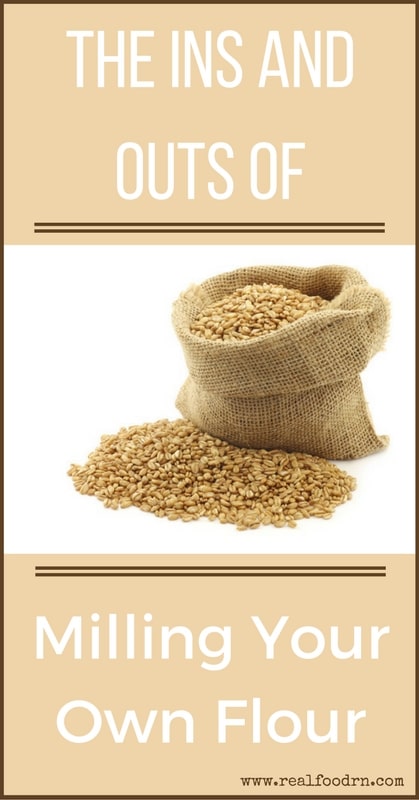







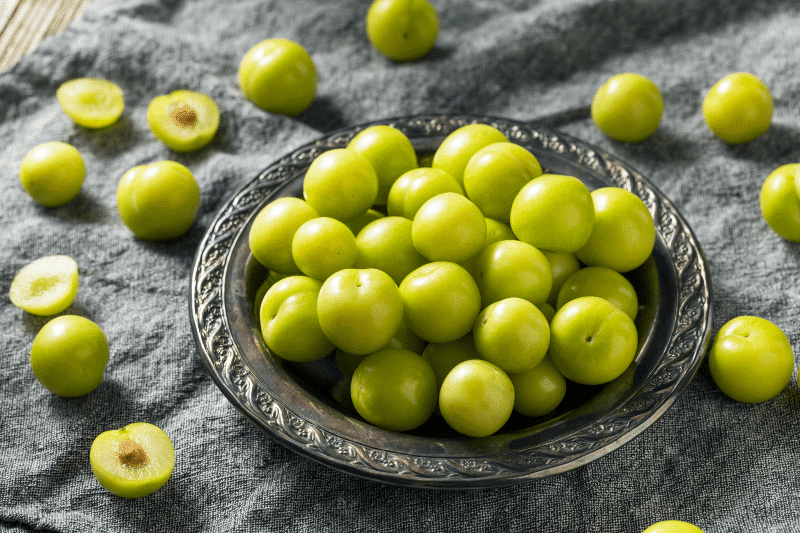
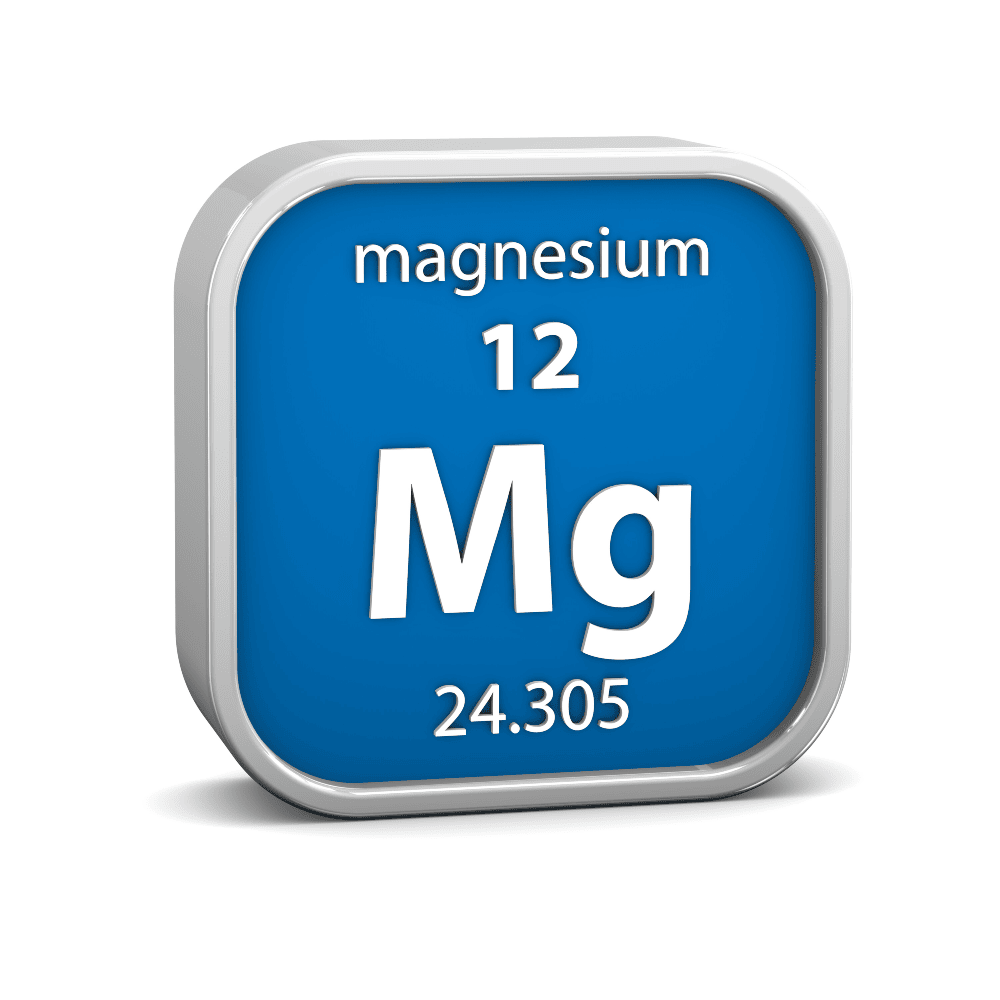
3 Replies to “The Health Benefits of Milling Flour in Your Home”
Can you use a vitamix with the grain attachment to mill your own einkorn berries ?
Yes, I think that should work! Let me know how it goes!